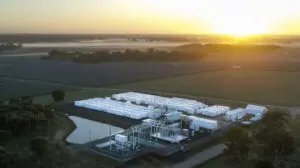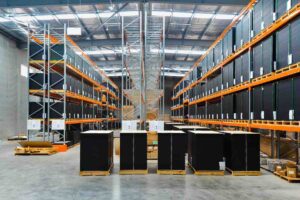The Australian start-up behind a renewable hydrogen solution that uses a Macquarie University engineered biocatalyst to convert biomass into “carbon negative” gas has received a $2 million investment from the federal government’s green bank.
The Clean Energy Finance Corporation says the investment in Sydney-based HydGene Renewables, via the Clean Energy Innovation Fund, was part of a $6 million seed raise that also attracted $2.5 million from specialist UK investor Agronomics.
The money raised through the seed funding round will be used to help establish a pilot plant and to expand HydGene’s team and further its research.
HydGene’s technology was spun out of research at Macquarie University that used synthetic biology to create a novel biocatalyst to convert carbohydrates from organic waste into green hydrogen gas.
In 2017, Arena selected the technology as one of 16 to share in $22.1 million of targeted renewable hydrogen funding. A recent knowledge sharing report from Arena names HydGene as one of two commercial start-ups to emerge from that funding round.
HydGene’s hydrogen production process takes place in specially designed modular plants, enabling localised, on-site green hydrogen production in rural and remote areas. This has the dual advantage of eliminating transport needs and allowing it to be deployed on site for the end user.
The hydrogen production rate and volume is regulated through an automated and feedback controlled process, also removing the need for storage.
Virescent Ventures, the specialist climate-tech venture capital firm that managed the CEFC’s investment in HydGene, says a key benefit of the technology is that it is “biomass agnostic,” with a focus on resources that already exist, and which would otherwise be discarded or burned.
The technology is particularly well suited to markets where feedstock supply and waste are abundant, like the agricultural, forestry, paper and pulp, and food industries.
“We need to be able to make green hydrogen in more geographies, with a wider range of inputs than just sun and wind. Organic waste streams are a perfect example,” says Virescent Ventures partner Blair Pritchard.
“The flexibility of this new fuel source offers a potential decentralised solution to energy generation, fuel supply and waste management, producing hydrogen where and when it is needed.
“The technology has the added benefit of stopping the practice of burning agricultural stubble, improving soil health,” Pritchard adds.
“This technology can be developed alongside electrolytic hydrogen to grow Australia’s green hydrogen industry as a critical factor in our net zero emissions economy of the future,” says CEFC CEO Ian Learmonth.
“Important policy initiatives like the Hydrogen Headstart program announced in the recent Federal Budget will also play a crucial role in developing Australia’s hydrogen energy sector as we transition to a low emissions economy.”
HydGene CEO and co-founder Dr Louise Brown says the financial backing from strategic investors like the CEFC and Agrinomics will bring the company closer to “revolutionising” chemical manufacturing and energy industries.
“With our specialised biocatalyst, we can efficiently upcycle waste biomass sources to produce green molecules under favourable conditions,” Brown says.
“Our innovative technology not only paves the way for the growth and adoption of decentralised manufacturing hubs, but also plays a crucial role in the global transition to an affordable, green hydrogen economy.”
HydGene joins Hysata and Ark Energy in the CEFC hydrogen portfolio, with further growth expected via the new Hydrogen Headstart program announced in the recent Federal Budget.
Agronomics’ investment in HydGene through the funding round gives it a 12.5% stake in the company.










